Rath Yatra 2024/ Ratha Yatra 2024.
The date of the Rath Yatra varies each year as it is determined by the Hindu lunar calendar.
Rath Yatra usually falls in the month of June or July.
In 2024, Rath Yatra is celebrated on Monday, 8th July.
In 2025, Rath Yatra is celebrated on Friday, 27th June.
In 2026, Rath Yatra is celebrated on Thursday, 16th July.
In 2027, Rath Yatra is celebrated on Monday, 5th July.
In 2028, Rath Yatra is celebrated on Saturday, 24th June.
In 2029, Rath Yatra is celebrated on Friday, 13th July.
In 2030, Rath Yatra is celebrated on Wednesday, 3rd July.
Ratha Yatra, one of the most significant Hindu festivals, is just around the corner, and devotees around the world are eagerly waiting to participate in the grand celebration.
This festival is an occasion to worship and seek blessings from Lord Jagannath, Balabhadra, and Subhadra, as they are ceremoniously taken in a chariot procession from the Jagannath Temple to the Gundicha Temple.
The festival holds immense religious significance for the people of Odisha and West Bengal, where it is celebrated with much enthusiasm and fervor.
With Rathaa Yatra 2024 approaching, preparations are already underway to make the event a grand success.
In this article, we will delve into the significance and traditions of Ratha Yatra and explore what to expect in the upcoming celebration.
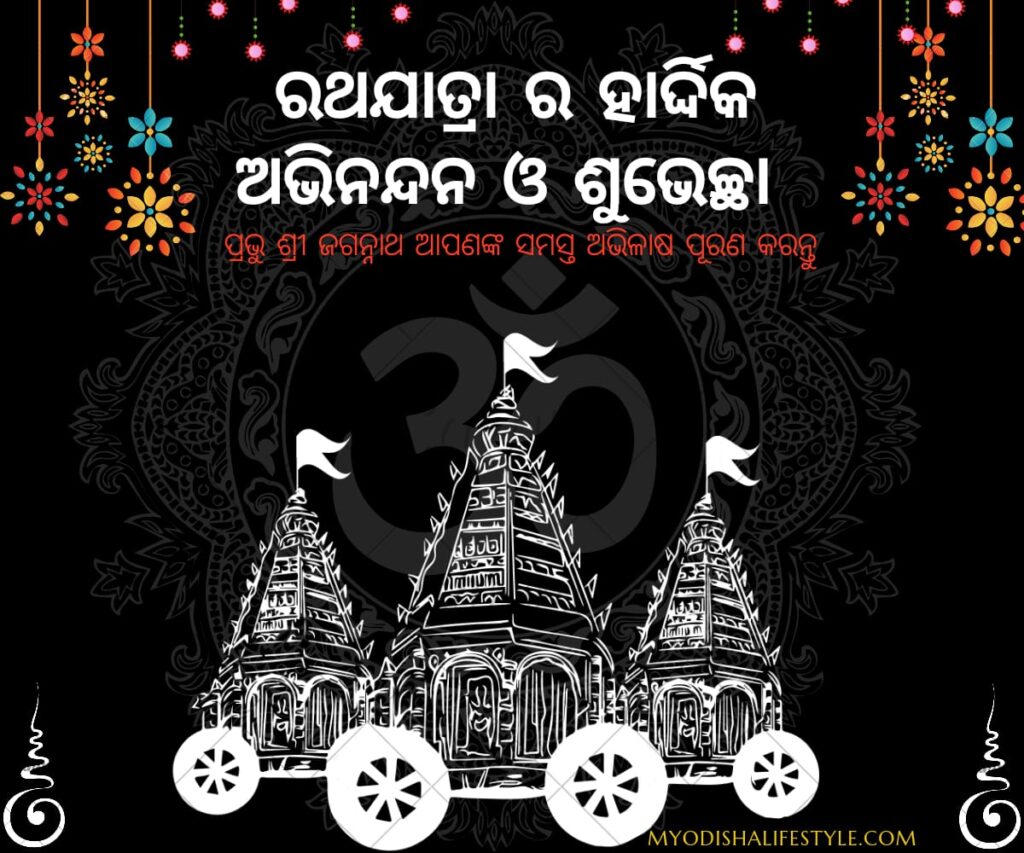
About Rath Yatra.
Ratha Yatra is a festival celebrated by devotees of Lord Jagannath, a Hindu deity worshipped mainly in the Indian states of Odisha and West Bengal, as well as other parts of India and around the world.
The festival involves the ceremonial procession of Lord Jagannath, his siblings Balabhadra and Subhadra, and the divine chariot on which they are seated, from their temple to the Gundicha Temple, about 3 kilometers away.
The festival usually falls in June or July and lasts for about nine days.
On the day of the procession, thousands of devotees gather to pull the chariot by means of long ropes, which are attached to the chariot.
The chariot is pulled through the streets of the city, accompanied by music, dancing, and chanting of devotional songs.
The festival has great religious significance and is seen as an opportunity to purify one’s soul and seek blessings from Lord Jagannath.
It is also believed that anyone who pulls the chariot of Lord Jagannath during the procession will be blessed with good fortune and will be granted entrance into the spiritual realm after death.
Significance of Rath Yatra.
Ratha Yatra holds immense religious and cultural significance for Hindus, particularly in the states of Odisha and West Bengal.
The festival is celebrated to commemorate the annual journey of Lord Jagannath, his brother Balabhadra, and sister Subhadra to their aunt’s temple, Gundicha Temple, in Puri, Odisha.
The chariot procession symbolizes the journey of the deities from their abode to their aunt’s house.
The festival is also believed to be an occasion to seek blessings from Lord Jagannath, who is considered to be the Lord of the Universe and the embodiment of compassion and love.
Participating in the Ratha Yatra procession is considered a pious act, and it is believed that doing so can grant spiritual purification and blessings.
Rath Yatra also has a social significance, as people from different communities and backgrounds come together to celebrate the festival.
The festival is an opportunity for people to forget their differences and celebrate the unity of all humanity.
Overall, Ratha Yatra is an important festival that celebrates the rich culture and traditions of India, and it serves as a reminder of the spiritual and social values that bind us together.
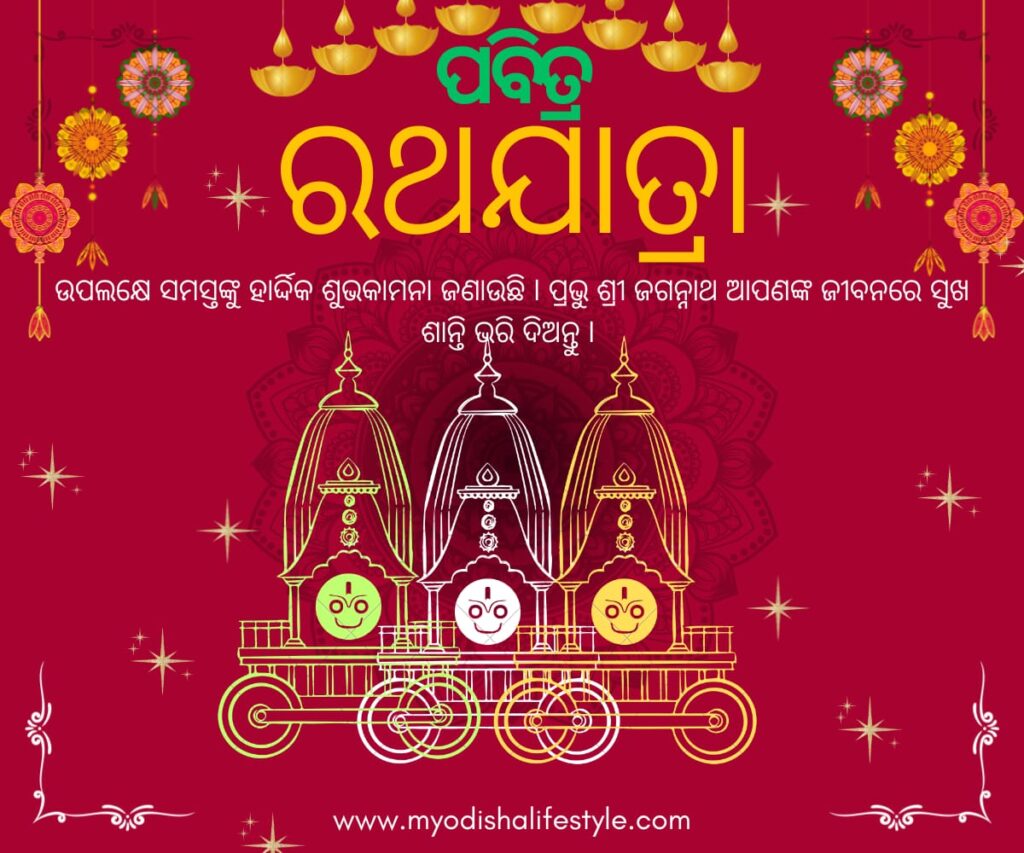
Traditions of Rath Yatra.
Rath Yatra is a festival that is steeped in rich traditions and customs. Some of the most significant traditions of Rath Yatra are:
1. Chariot Construction:
Months before the festival, the construction of the chariots begins.
The three chariots, one each for Lord Jagannath, Balabhadra, and Subhadra, are made from wood, and decorated with brightly colored cloth, flowers, and ornaments.
2. Snana Yatra:
The festival begins with the Snana Yatra, where the deities are bathed with 108 pots of water in a ceremony that symbolizes their purification.
After the Snana Yatra, the deities are kept away from public view for two weeks, during which they are said to recover from the fatigue of the Snana Yatra.
3. Pahandi:
On the day of the Ratha Yatra, the deities are brought out of the temple in a procession called Pahandi.
The deities are carried on decorated palanquins to their respective chariots, and the chariots are then pulled through the streets of the city by thousands of devotees.
4. Chhera Pahara:
The Gajapati Maharaja of Puri, who is considered to be the first servant of Lord Jagannath, sweeps the chariots with a golden broom in a ritual called Chhera Pahara.
This ritual symbolizes the humility and devotion of the king towards Lord Jagannath.
5. Return Journey:
After a week-long stay at the Gundicha Temple, the deities make their return journey to the Jagannath Temple in a procession called Bahuda Yatra.
The return journey is as grand as the Rath Yatra procession, and thousands of devotees participate in the event.
These are some of the major traditions of Ratha Yatra, and they serve to make the festival a truly magnificent and joyous occasion.
Spiritual Faith Of Rath Yatra.
Rath Yatra is not just a festival of grand processions and colorful chariots; it is also a celebration of spiritual faith.
The festival is a time for devotees to express their love and devotion towards Lord Jagannath, Balabhadra, and Subhadra, and to seek their blessings.
The festival is rooted in the ancient Indian philosophy of Bhakti Yoga, which emphasizes the practice of devotion and surrenders to God.
Ratha Yatra offers devotees an opportunity to express their love for God through various rituals and traditions.
Participating in the Ratha Yatra procession is considered a sacred act, and it is believed to offer spiritual purification and blessings.
The chariot carrying Lord Jagannath, Balabhadra, and Subhadra is seen as a divine vehicle, and the act of pulling the chariot is believed to be a way of offering service to the Lord.
Rath Yatra is also an occasion to reflect on the spiritual teachings of Lord Jagannath.
Lord Jagannath is believed to represent the universal principle of love and compassion, and the festival serves as a reminder of the importance of these virtues in our lives.
The festival also emphasizes the importance of humility and devotion, as seen in the Chhera Pahara ritual, where the king of Puri humbly sweeps the chariots of the Lord.
Overall, Ratha Yatra is a festival that celebrates the spiritual faith and devotion of the Hindu community.
The festival offers devotees an opportunity to express their love for God and seek spiritual purification and blessings, and it serves as a reminder of the importance of love, compassion, humility, and devotion in our lives.

Celebrations Of Rath Yatra.
Rath Yatra is a festival that is celebrated with great enthusiasm and joy by Hindus in India, especially in the states of Odisha and West Bengal.
The celebrations of Ratha Yatra usually last for several days, and involve various rituals and customs.
1. Rath Yatra Procession:
The Rath Yatra procession is the most significant aspect of the festival.
The chariots carrying Lord Jagannath, Balabhadra, and Subhadra are pulled through the streets of the city by thousands of devotees.
The procession is accompanied by music, dance, and chants, creating a festive atmosphere.
2. Bhajans and Kirtans:
During the Ratha Yatra festival, devotees sing bhajans and kirtans in praise of Lord Jagannath, Balabhadra, and Subhadra.
These devotional songs are believed to create an atmosphere of spiritual ecstasy and divine love.
3. Delicious Food:
Ratha Yatra is also a time for feasting and indulgence.
Devotees prepare a variety of delicious food items, including the famous ‘Mahaprasad’ of Lord Jagannath’s temple, which is believed to have spiritual significance.
4. Cultural Programs:
Ratha Yatra celebrations also include cultural programs, such as folk dances, dramas, and other forms of entertainment.
These programs showcase the rich cultural heritage of India and add to the festive atmosphere of the occasion.
5. Decorating the City:
The streets and houses are decorated with lights, flowers, and colorful banners during the Rath Yatra festival.
The city is transformed into a vibrant and colorful place, creating a festive atmosphere that is enjoyed by people of all ages.
Overall, Ratha Yatra is a festival that is celebrated with great enthusiasm and joy by Hindus all over India.
The festival is marked by grand processions, devotional songs, delicious food, cultural programs, and a general atmosphere of joy and celebration.

Rituals Of Rath Yatra.
The Rath Yatra, one of the most important Hindu festivals, is marked by various rituals and customs that are considered sacred by devotees.
These rituals are observed with great devotion and fervor and are an integral part of the festival. Here are some of the main rituals of Rath Yatra:
1. Snana Purnima:
On the full moon day of the Hindu month of Jyeshtha, the idols of Lord Jagannath, Balabhadra, and Subhadra are bathed in a ritual known as Snana Purnima.
This ritual is believed to purify the deities and is performed with great devotion.
2. Gundicha Marjana:
A day before the Rath Yatra procession, the Gundicha Temple, which is dedicated to Lord Jagannath, is cleaned and decorated with flowers.
This ritual is known as Gundicha Marjana and is performed to welcome the Lord to his aunt’s house.
3. Chhera Pahara:
The Chhera Pahara ritual is a symbolic representation of humility and devotion.
It is performed on the second day of the Rath Yatra when the King of Puri sweeps the road with a golden broom in front of the chariots of the Lord, signifying that everyone, regardless of their status, is equal before God.
4. Ratha Pratishtha:
The idols of Lord Jagannath, Balabhadra, and Subhadra are placed on their respective chariots, and a ritual known as Ratha Pratishtha is performed to invoke the presence of the Lord in the chariots.
5. Rath Yatra Procession:
The main ritual of Rath Yatra is the procession of chariots carrying the idols of Lord Jagannath, Balabhadra, and Subhadra.
The chariots are pulled by devotees, and the procession is accompanied by music, dance, and chants, creating a festive atmosphere.
6. Bahuda Yatra:
On the tenth day of the festival, the idols of Lord Jagannath, Balabhadra, and Subhadra are brought back to the Jagannath Temple in a procession known as Bahuda Yatra.
Overall, Rath Yatra is marked by several rituals and customs that are considered sacred by devotees. These rituals are performed with great devotion and are an integral part of the festival.
They symbolize various aspects of Hindu philosophy and serve as a reminder of the importance of devotion, humility, and service to God.
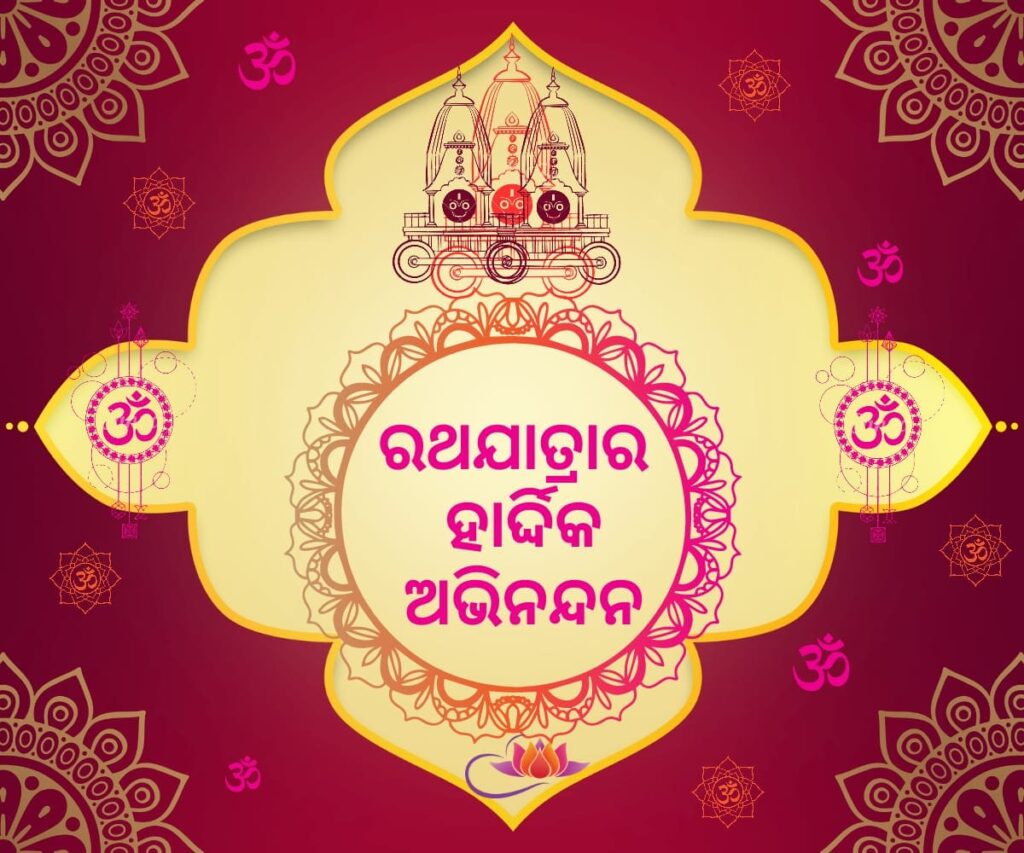
History Of Rath Yatra.
The history of this auspicious festival Rath Yatra, also known as the Chariot Festival, dates back to ancient times and is steeped in mythology and legends.
According to Hindu mythology, Lord Shir Jagannath, an incarnation of Lord Vishnu, along with his brother and sister, Balabhadra, and Subhadra, once expressed his desire to visit his birthplace, Mathura.
To fulfill your all wish, the Lord’s devotees built chariots and pulled them from the Jagannath Temple in Puri to Gundicha Temple, about two miles away.
The history of Rath Yatra (Lord Jagannath, Balabhadra, and Subhadra) can also be traced to the 12th century when King Anantavarman Chodaganga Deva of the Eastern Ganga Dynasty initiated the construction of the Jagannath Temple in Puri.
This Jagannath temple became a center of worship, attracting devotees from all over World, especially in Rath Yatra.
The Rath Yatra festival became an annual event, and over time, it evolved into a grand procession, with thousands of devotees pulling chariots through the streets of Puri.
In 1967, the International Society for Krishna Consciousness (ISKCON) organized a Rath Yatra procession in San Francisco, USA, which has now become an annual event in many cities worldwide.
After all, the history of Rath Yatra dates back to ancient times and is steeped in mythology and legends.
Today, the festival is celebrated with great enthusiasm and devotion by millions of Hindus worldwide, making it one of the most significant religious festivals in the world.
Rath Yatra Wishes 2024.
Here are some Rath Yatra 2024 wishes that you can share with your close ones in 2024:
May the blessings of Lord Shri Jagannath be with you and your family on this ospicious occassion- Rath Yatra. Happy Rath Yatra!
May the divine blessings of Lord Jagannath bring you peace, happiness, and good fortune. Wishing you a happy Rath Yatra.
Let us come together and celebrate the grand procession of Rath Yatra, praying for the well-being and prosperity of all. Happy Rath Yatra!
May the holy chariots of Lord Jagannath, Balabhadra, and Subhadra bring joy and happiness to your life. Happy Rath Yatra!
May the blessings of Lord Jagannath fill your life with love, peace, and prosperity. Happy Ratha Yatra!
May the divine grace of Lord Jagannath light up your life with peace, love, and happiness. Happy Rath Yatra!
May the holy chariots of Lord Jagannath carry away all the sorrows and troubles from your life and bring happiness and peace to you. Happy Ratha Yatra!
Let us celebrate the grandeur and magnificence of Rath Yatra with love, joy, and devotion, seeking the blessings of Lord Jagannath. Happy Rath Yatra to you and your family.
May the divine blessings of Lord Jagannath fill your life with love, happiness, and prosperity. Happy Rath Yatra to you and your loved ones.
Let us offer our prayers to Lord Jagannath on the auspicious occasion of Rath Yatra and seek his blessings for a bright and successful future. Happy Rath Yatra!
Conclusion.
No doubt that Ratha Jatra is a festival of great spiritual significance that celebrates the rich culture and traditions of Odisha and also India.
The festival represents the journey of three Lords: Lord Shri Jagannath, Shri Balabhadra, and Subhadra from their temple to the Gundicha temple, where they stay for a week before returning to their abode.
The celebrations of Ratha Yatra are marked by elaborate rituals, beautiful decorations, and grand processions that attract thousands of devotees from all over the world.
You also like to read these articles:
Odia Calendar 2023- Kohinoor Odia Calendar.
FAQs (Frequently Asked Questions).
What is the date of Rath?
In 2023, Rath Yatra is celebrated on Tuesday, 20th June.
In 2024, Rath Yatra is celebrated on Monday, 8th July.
In 2025, Rath Yatra is celebrated on Friday, 27th June.
In 2026, Rath Yatra is celebrated on Thursday, 16th July.
In 2027, Rath Yatra is celebrated on Monday, 5th July.
In 2028, Rath Yatra is celebrated on Saturday, 24th June.
In 2029, Rath Yatra is celebrated on Friday, 13th July.
In 2030, Rath Yatra is celebrated on Wednesday, 3rd July.
Is Rath Yatra celebrated every year?
Yes, Ratha Yatra is typically celebrated every year.
Rath Yatra, also known as the Chariot Festival, is a major Hindu festival associated with Lord Jagannath (a form of Lord Krishna) that takes place in the Indian state of Odisha, as well as in other parts of India and around the world where there are significant Hindu communities.
The festival involves the ceremonial procession of deities on chariots, pulled by devotees, through the streets.
The main Ratha Yatra in Puri, Odisha, is particularly famous and draws a large number of devotees and tourists.
While the specific dates of Rath Yatra may vary from year to year, it generally takes place during the month of June or July.
The festival follows the lunar calendar and occurs on the second day of the bright fortnight of the Hindu month of Ashadha.
It’s worth noting that different regions and communities may have their own variations and traditions associated with Ratha Yatra, so the specific practices and dates may vary slightly.


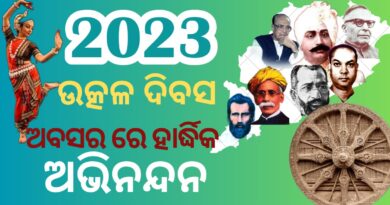
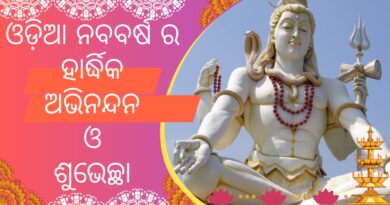
Pingback: 2023 Rath Yatra Wishes, Quotes, Pics, Gifs, Image, Massages And Greetings. - Odisha Lifestyle